I had the distinct pleasure of meeting our January 2021 site artist (and the subject of this Close-up) at CookieCon in Reno back in 2019, the year she left that show with not one, but THREE cookie decorating prizes! Yes, this month’s featured artist is the super-talented Annelise Binois of Le Bois Meslé. As we learned in Annelise’s earlier forum introduction, she lives near Paris with her six-year-old daughter and a number of pets. Working full time as a professor of archaeology, Annelise turns into a keen decorator in between school terms. Though her cookie production may be sporadic due to her day job, she enjoys making time-consuming sets of highly decorated cookies, whenever she can and just for the art of it.
My meeting with Annelise in Reno was altogether too brief (we literally crossed paths for a few minutes in a crowded hall), so I am over-the-moon excited to have this opportunity to get to know her a lot better.
So, let’s dive right into my questions, shall we?!
![]()
JMU: Hello, Annelise! I’m thrilled to know that so many of your cookies have landed on Cookie Connection, especially when your available cookie decorating time seems so scarce. We are so lucky to have you here! Thank you again for your contributions since joining the site in January 2018, and your charming January 2021 site art!
Back when I was a kid, I dreamed of becoming an archaeologist, and then other professions got in the way! ![]() So I want to start by fulfilling my dream vicariously by learning more about what your archaeology work entails. Can you tell us how you typically spend your work week? What is your specialty/area of research or study? Do you actually go out on digs (which is on my bucket list, BTW)?! If so, tell us about your latest one!
So I want to start by fulfilling my dream vicariously by learning more about what your archaeology work entails. Can you tell us how you typically spend your work week? What is your specialty/area of research or study? Do you actually go out on digs (which is on my bucket list, BTW)?! If so, tell us about your latest one!
![]()
AB: Thank you, Julia, for your very kind introduction, and for inviting me for this Cookier Close-up! So, indeed, I am an archaeologist, and I specialize in zooarchaeology, the study of animal remains found on archaeological sites. This field allows us to understand the relationships between past societies and the animal world: which species were hunted, which were domesticated, and how; which animal products were eaten and which were exploited in daily life for clothing or for tools; and, overall, how past people interacted with the animals that surrounded them. I find it a fascinating topic of research, and can become quite a bore if I start on the subject! As with many academics, my time is split between research and teaching and supervising students. My research is mostly lab-based, in a large room filled to the ceiling with assorted animal skeletons and boxes of bones. I actually do very little field work, not more than a few days a year, but I enjoy it very much and thoroughly recommend it! My last stint on a dig was last summer, where I contributed to the excavation of a bull skeleton buried in the courtyard of a Cistercian abbey in northern France.
(Annelise's love of animals comes through in her cookies!)
![]()
JMU: So very fascinating. I do believe I may have missed my calling, as the work you describe is so interesting to me. ![]() What’s been your most exciting archaeological find (or accomplishment), and why?
What’s been your most exciting archaeological find (or accomplishment), and why?
![]()
AB: Not an easy question - animal bones are rarely very exciting for the average person! I guess my most important research was my PhD focusing on the archaeology of epizootic disease, and exploring which animal diseases were prevalent when, how they could be identified archaeologically, and what the people of the past did about them. It seems quite timely in the current context! But my most touching case was a dog skeleton, which I demonstrated had been the victim of recurring human-mediated violence all through its short life . . .
![]()
JMU: Oh no - though I imagine, with archaeology, you unearth (sorry for the pun) as many good stories as not-so-good ones. That's just how life is: not complete without both ups and downs. You mentioned in your forum intro bio that you became hooked on cookie decorating in 2017 after researching cake ideas to celebrate a friend’s PhD defense. What specifically did you see while researching that drew you so immediately to cookies? And what is it about cookies that keeps you riveted to them even to this day?
![]()
AB: I suppose two things drew me in immediately: first, that cookie decorating called for very little specific equipment, and that I could start at once with what I already had in my kitchen; and, secondly, that I wanted to decorate but really, really hate buttercream! I had no idea decorated cookies even existed before 2017, but the moment I saw examples online (mostly yours and SweetAmbs', if I recall correctly), I knew it was for me. It's really the perfect hobby: cookies are cheap, don't take up much space, and, because of their small size, even the most intricate piece rarely takes more than a day or so to complete. And, most importantly, in contrast to many other arts, your friends never tire of receiving your productions!
![]()
JMU: All said - so true! How often do you get around to cookie decorating? And how do you decide on the projects you’re going to undertake when you finally find time to decorate? What or who inspires your cookie work?
![]()
AB: From 2017 to 2019, I decorated cookies almost weekly; I had so much to learn and to try out, and the concentration required was greatly useful to distract me from unhappy stuff going on in my personal life. When I got hired in my current position in 2019, however, I found that I no longer had the time, nor the energy, to decorate during term time. So now I mostly get out my gear for big occasions - a friend's or family member's milestone birthday or diploma, a new baby, and the decorating challenges on Cookie Connection! I enjoy the exercise of creating something original within given constraints, and the challenges push me to try out techniques I would not have used otherwise. The dragonfly below was my Practice Bakes Perfect Challenge #30 - Crystal Clear entry!
![]()
JMU: I am so glad you take part in the challenges, and even happier to know that they are fulfilling our primary objective (encouraging learning and growth) for you! You also mentioned that you’re quite content with decorating cookies for the sake of decorating, and that you have no intention of ever selling your cookies. Why do you say this?
![]()
AB: Though I would, of course, enjoy the additional income, I feel that making cookies to order would rob me of the pleasure of having a creative hobby. I enjoy making detailed, intricate cookies that would be nearly impossible to make a profit on in the French market, and I am not really interested in "mass-producing" the type of pretty-but-quick cookies that would be marketable; I would find that terribly boring, I'm afraid. And most of all, I'm an academic and a single mom. I'm already busy enough, and I really do not need any more stresses and deadlines in my life! So I'm quite content with keeping cookie decorating a fun hobby that I can indulge in whenever I want, and ignore when it doesn't fit in my life.

(For a medieval-themed baby shower)
![]()
JMU: On to Paris! Ooh la la! ![]() Paris has the reputation of being one of the greatest cities in the world for sweets. Would you agree with this assessment? What are some of your favorite sweets, sweets traditions, or landmarks there that you think members ought to know about.
Paris has the reputation of being one of the greatest cities in the world for sweets. Would you agree with this assessment? What are some of your favorite sweets, sweets traditions, or landmarks there that you think members ought to know about.
![]()
AB: I haven't visited enough cities to have a first-hand experience of this assessment, but I would definitely say that French pastries and desserts are amazing, in my totally unbiased opinion! I love that, even in the smallest of villages, you will always find a bakery (boulangerie) selling delicious bread and viennoiseries (croissants, pains au chocolat, brioches, and the like). I love that in most towns you will have, in addition to several bakeries, a patisserie specializing in individual cakes and pastries. I particularly enjoy traditional, simple pastries when they are made by a good pâtissier, such as an éclair (1), a religieuse (2), a mille-feuille (3), or a tarte au citron meringuée (4). Another slightly less common sweet I love is the Mont Blanc: meringue, chestnut purée, and whipped cream!
- An oblong sweet made with choux pastry filled with crème pâtissière (pastry cream) and topped with icing - most often chocolate or coffee flavored.
- Made of two choux pastry cases, one larger than the other, filled with crème pâtissière, most commonly chocolate or coffee, and joined with whipped cream.
- Traditionally made up of three layers of puff pastry, alternating with two layers of pastry cream. The top pastry layer is glazed with icing in alternating white (icing) and brown (chocolate) stripes that are combed (or marbled).
- Lemon meringue pie.
![]() JMU: Oh my! I am salivating just at the thought of these sweets! So . . . I am curious . . . does Paris have any sweets that you wouldn’t touch with a ten foot pole?
JMU: Oh my! I am salivating just at the thought of these sweets! So . . . I am curious . . . does Paris have any sweets that you wouldn’t touch with a ten foot pole? ![]() Which, if any, and why?
Which, if any, and why?
![]()
AB: I think most of the traditional French pâtisseries are delicious . . . However, I have already touched on my hatred of buttercream. I hate American buttercream and French buttercream - which is richer but less sweet - equally, and therefore do not enjoy buttercream-based pastries, such as the Opera (1) or the Paris-Brest (2). Both are nonetheless very popular, and I definitely recommend them if you do not have my dislike of buttercream!
- Made with layers of almond sponge cake soaked in coffee syrup, layered with ganache and coffee French buttercream, and covered in chocolate glaze.
- Round pastry, in the form of a wheel, made of choux pastry and a praline-flavored buttercream.
![]()
JMU: Well, I'll eat whatever Opera and Paris-Brest you won't touch - LOL! We all know Paris is famous for its macarons, but what about decorated cookies?! Is cookie decorating as popular there as it is in the US? Why or why not? Is interest in cookie decorating growing or waning there, and what indicators lead you to say this?
![]()
AB: I had no idea decorated cookies even existed when I stumbled upon them a little over three years ago, and most people I meet are surprised that cookie decorating is a thing - so I'd say it is definitely a very niche hobby in France! I think one of the reasons decorated cookies are not very popular is that cookies iced with royal icing are intensely sweet, much too sweet to the average French palate. And like most Europeans, we tend to prefer crispy, crumbly cookies to the soft, moist American sugar cookie. I've adapted my recipes to suit this taste better. I use a shortbread-type biscuit, with fairly little sugar and added salt. I also flavor my royal icing with orange-blossom water, a traditional flavoring for sweets in the South of France and which I find partly tempers the sweetness of the icing.
Cookie decorating is, however, becoming increasingly popular, in the same way many American trends are imported to France by celebrities and social media. Nowadays, there appear to be quite a few French cookie decorators on Instagram, for instance. I did not find a single one when I joined in January 2018!
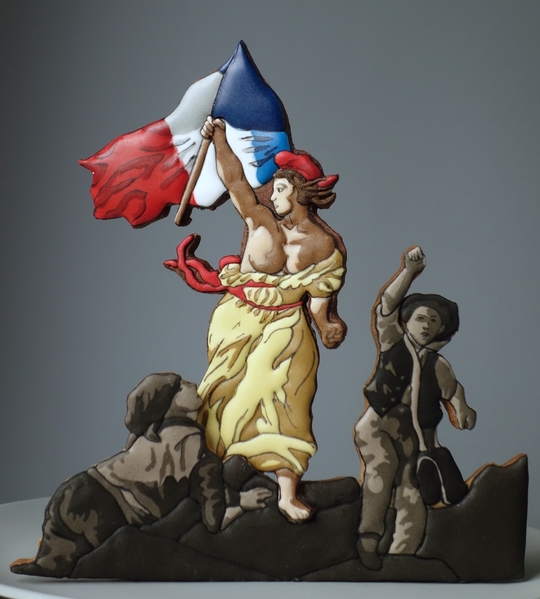
(For a Bastille Day collaboration; based on "La Liberté Guidant le Peuple", original painting by Eugène Delacroix)
![]()
JMU: I tend to prefer the sort of cookie you describe as well. I find many cookies here too blond in color and bordering on under-baked. But to each her own, as they say! Now, let’s turn to your cookie work! It takes but a quick glance at your Cookie Connection portfolio to see how meticulous and adept you are – with a wide range of techniques. Yet you’ve only been decorating since 2017, and around a full-time job! How did you go about so rapidly acquiring decorating skills? What resources, tools, and/or techniques did you use to jumpstart your learning process?
![]()
AB: Thanks for the compliments; I've still got a lot to learn! I've always been craftsy and meticulous in my hobbies and my life, and I am lucky cookie decorating came easily to me. That is not to say I did not read and watch a whole lot of online resources when I started out! I don't remember all I used, but I definitely watched your videos - the fact that you could use parchment paper cones for piping was the deciding factor that got me to try cookie decorating! I also found Cookie Connection early on in my decorating journey, and the challenges were instrumental in my acquiring of new techniques. When I participated in my first challenge (Challenge #26 - Cookie Swap), I had only been decorating cookies for five weeks (I decorated my first cookies in December 2017 exactly!), and the different themes definitely pushed me to branch out in directions I would not have tried otherwise. That first entry, "Yellow Roses and Lace", is pictured below.
![]()
JMU: Yay for our challenges and challenge hosts. They've all done a terrific job over time! I am so grateful for their hard work. And, again, I'm beyond thrilled to know that you, and others like you, honed your skills through them. Of all the techniques that you do (which are many), which are your favorites and why?
![]()
AB: I actually really enjoy wet-on-wet work, maybe because it is both technical and fast - no fiddling for ages, no redoing, and no wasted time waiting for layers to crust! I know it is not a very popular technique, but it's definitely one I enjoy - even though it's probably not what I am best at doing.
![]()
JMU: Interesting that you say wet-on-wet is not very popular. I think that's probably been the case, but I do believe it's getting some renewed interest these days - especially in the form of colorful wet-on-wet underlays with black line drawings on top. I like its ease too, and hope it's here to stay! Just wondering . . . Do you have a cookie Achilles’ heel, i.e., a technique that you just can’t seem to master, or which you don’t like? If so, what is it and how, if at all, do you intend to conquer it? ![]()
![]()
AB: I am not great at piping flowers, which is a great frustration of mine. I always struggle to find the right consistency of icing. It always seems to end up either too stiff and impossible to squeeze out or too loose, looking great initially but then flopping over and dissolving in a half-puddle. And then all of my flowers look similar: they all look like toothpick roses, which are fine, but frustrating to obtain when I'm trying for peonies, pine cones, or daffodils! I have even taken a half-day class dedicated just to flower piping, but to no avail. I am on the verge of giving up, honestly, but will probably still give them a last try or five before throwing away my flower tips!
![]()
JMU: I'm sure they're not that bad. But maybe we need a flower-piping challenge?! (Picture a light bulb going on above my head! LOL! ![]() ) Let’s return to your CookieCon Reno experience for a sec. You won three prizes in their Sugar Show – wow, that’s a huge accomplishment, especially for a first-time competitor! Can you share photos of your winning pieces, and discuss the biggest challenges you had in creating those pieces for the competition? Also, why do you think these pieces were so successful at the show?
) Let’s return to your CookieCon Reno experience for a sec. You won three prizes in their Sugar Show – wow, that’s a huge accomplishment, especially for a first-time competitor! Can you share photos of your winning pieces, and discuss the biggest challenges you had in creating those pieces for the competition? Also, why do you think these pieces were so successful at the show?
![]()
AB: Thanks! The botanical plates (one of which is shown directly below) won first prize in the beginner-level "Anything Goes" category, and the friendly ants (just below the flower cookie) got third place in the beginner-level "Art and Music" category.
But the prize I am proudest of is my third place in the "Mystery Shape" competition, the motorcycle you see below! That cookie was decorated on site in limited time, and decorators were not separated into skill-based categories for judging, so it meant a lot to me to be recognized in that category.
Designing the cookies was fun. The idea for "Art and Music" came at once, as a friend had very recently told me of her niece begging her father to play "the ant song" - you know the one that goes, "the ants are my friends, they're blowing in the wind...""?! I really enjoyed planning out the different pieces of the set, though the faces of the ants were really hard to get right, and I'm not quite satisfied with them. I hesitated much longer with my "Anything Goes" entry; I usually do better when given some constraints. I finally decided on a very classical set, in contrast to my joke ant set, and, as I naturally gravitate toward flora and fauna, I ended up with spring bulbs and small bugs in the style of ancient botanical plates. I like drawing flowers, so those cookies were enjoyable to draft as well. Neither of my showpieces used any very intricate techniques, so I mostly focused on being as precise and as clean as possible in my decorating, and on taking the time to get the exact right consistency and color for each part, even if it meant mixing seven different tones of green!
The biggest challenge I faced with the Sugar Show was undoubtedly importing my cookies from France. I had never travelled with cookies before, and was very anxious - partly that they might break, so I packed them very carefully and kept them with me at all times, but mostly that they would be seized by customs on entry in the US, as all food imports from France are heavily regulated. Thankfully, the agent who controlled my cookies just wished me good luck in the competition, and I only encountered minor breakage.
As to why they were successful in the show, your guess is as good as mine! If I really had to wager an answer, I'd say my entries combine delicate and clean piping with original designs, but this sounds both boastful and vague - sorry I can't do better!
![]()
JMU: I'd definitely trust that answer, especially from what I've seen of these cookies! So well done! What tips would you give to those who aspire to enter their first (or more) cookie competitions? Any advice for how one can present at his/her best?
![]()
AB: I am hardly qualified to give out tips, as I have only ever entered a single competition!
The most helpful advice that I can probably share is that many things I worried about turned out not to be an issue in the beginner division. My cookies were very small (tallest one was under 5 inches/12.5 centimeters), quite simple both in construction (no elaborate 3-D display) and technique (simple piping/flooding), and not overly time-consuming (each set was decorated over a weekend). I was absolutely convinced they weren't "enough", and would be totally overlooked compared to the large intricate pieces on display. I was wrong!
So don't be afraid to enter! Even if you don't own any decorating gadgets, even if you don't have much time, and even if you haven't yet mastered the more complicated techniques, you still stand a chance. All it takes is a well-designed and flawlessly executed set.
![]()
JMU: Good advice! On to one of my favorite questions! What do you like most about belonging to the online cookie community, and why? And I’m not talking just about Cookie Connection; I’m talking about “community” in the broadest sense of how you experience it everywhere online. Conversely, what’s your least favorite part about it, and why?
![]()
AB: I very much enjoy the online cookie community! I find it very welcoming, supportive, and kind, even with my socially awkward, foreign self. People truly go out of their way to encourage each other! My least favorite part of it is that it is online; I'm really not great at social media. I'm not on Facebook, I prefer in-person interactions, and I find it difficult to make online friends. I would really love to be able to meet with other cookie decorators in person and to be able to actually discuss my hobby with someone while sharing a cup of tea . . . Someday maybe?
![]()
JMU: Gosh, I hope so! I can't wait to get back to in-person gatherings! You mentioned that you’d like to combine your love of teaching with cookie decorating, but that your first forays into cookie decorating classes weren’t that successful. Are you sure? What makes you say that, and, with the benefit of some hindsight now, what would you do differently to ensure the success of any future classes?
(Annelise's second of three botanical plate cookies for CookieCon 2019)
![]()
AB: I teach for a living, and it's something I enjoy and am proficient at (or so I hope), so giving cookies classes seemed like a perfect activity for me that would allow me to share my hobby with interested others and to make a little pocket money. So I prepared a lesson plan and teaching materials, bought whatever I needed to teach a class of eight students, and defined a very affordable price for the class. I posted the class online, sent emails to all of my friends and family, stuck fliers at my workplace . . . and utterly failed to attract students. I held my class twice: once for four students, and once for three. A third date had to be cancelled due to lack of enrollment. The two courses I held went well, and the students seemed happy, but it was too much work for so little interest, and I gave up cookie classes for the time being.
I would definitely be interested in trying again once I can figure out how to boost enrollment, but I must admit I'm not very optimistic - I do not know how to market my classes, and there maybe is not that much interest in the activity.
![]()
JMU: Yes, it sounds as if France has a different appetite for cookie decorating classes than does the US. Though I bet if you took your classes online, you'd draw bigger numbers from a wider area. Your work is so lovely! And it’s now time for my usual parting question! Where would you like to see yourself in the cookie decorating world three years from now? And why?
![]()
AB: Even though I currently do not decorate cookies very often, I very much hope to still be part of the cookie decorating world in three years! My dearest cookie-related project is to enter more cookie competitions. I will probably not be participating in any US competitions, as the cost to attend from France is prohibitive - I was only able to attend CookieCon in Reno due to an unexpected windfall - but I am thinking of submitting an entry to the next Cake International cookie competition in London. And who knows, I'll maybe also be teaching successful decorating classes by then?
In any case, I want to thank you very much for this interview and the opportunity to showcase my work on Cookie Connection! Thanks for all you do!
![]()
JMU: You're very welcome! Thank YOU for this seriously fascinating interview and your very thoughtful, in-depth answers. I so loved learning more about you, and hope another windfall comes your way so we can catch up again at a future CookieCon!
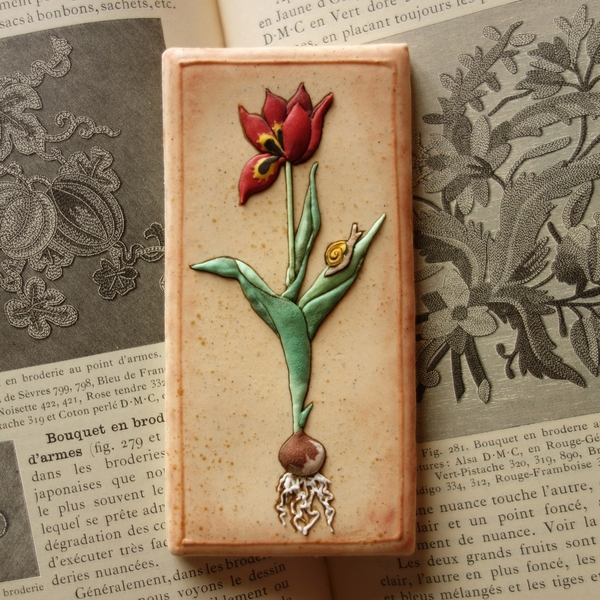 (Annelise's final botanical plate cookie for CookieCon 2019)
(Annelise's final botanical plate cookie for CookieCon 2019)
To see more of Annelise's cookie work, please visit her Cookie Connection portfolio and Instagram page.
Cookie and photo credits: Annelise Binois of Le Bois Meslé

Cookier Close-ups is the place on Cookie Connection where we celebrate the change-makers of the cookie decorating world. Whether forging new enterprises, inventing novel decorating techniques, or consistently charming us with their cookie decorating prowess, each of our featured thought leaders has redefined in his/her distinctive way how we interact, create, or otherwise do business here in cookie space!
If there are other cookiers you'd really like to get to know, please post requests in this forum. We'll do our best to round them up for an upcoming Cookier Close-up! Thanks!



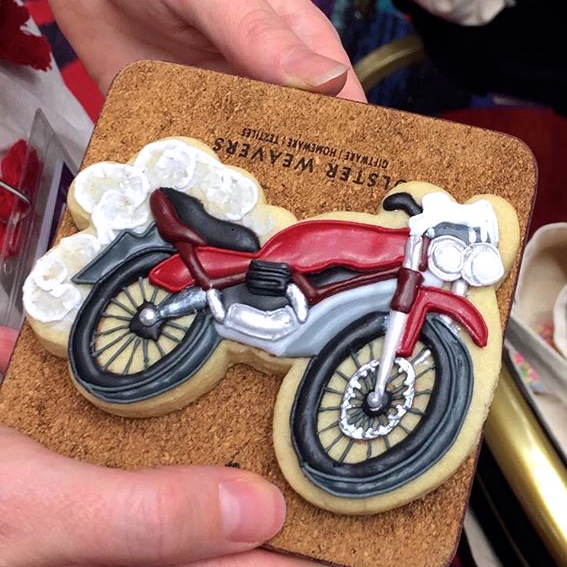
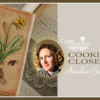

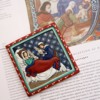




Comments (12)